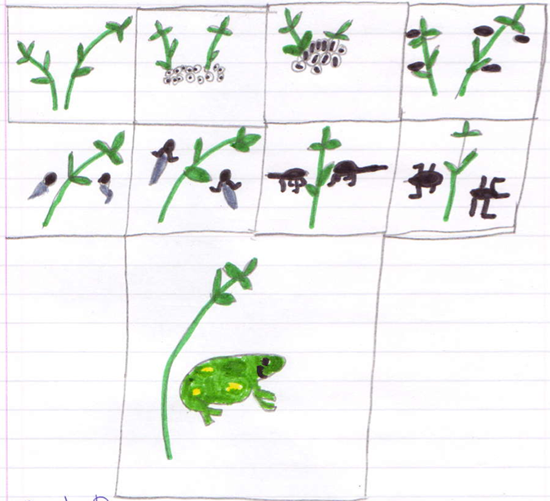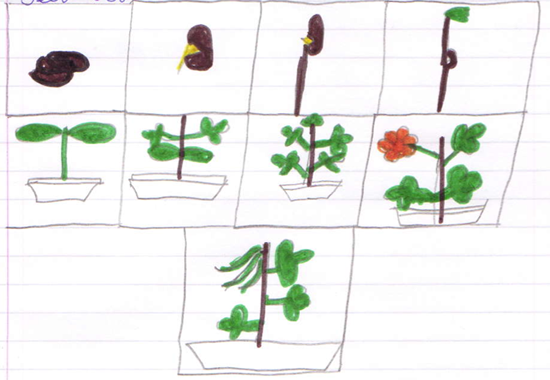Skip over navigation
The plant is exactly the same, the seed germinates and grows, creates roots and the produces seeds in which another plant grows from.




Or search by topic
Number and algebra
Geometry and measure
Probability and statistics
Working mathematically
Advanced mathematics
For younger learners
Order the Changes
Age 7 to 11
Challenge Level 





- Problem
- Getting Started
- Student Solutions
- Teachers' Resources
Natasha from Ricards Lodge reminds us that:
These cycles are just big circles which repeat themeselves over time, for example the life cycle of a frog starts with frogspawn, then they slowly grow into tadpoles and become fully grown frogs, this is where the cycle begins again.The plant is exactly the same, the seed germinates and grows, creates roots and the produces seeds in which another plant grows from.
You're right, Natasha. So, this means we could start anywhere in the cycle and order the pictures from that point.
Niharika from Leicester High School for Girls drew the two cycles for us in the correct order:


Jessie from Ricards Lodge added descriptions to the order of the bean life cycle that she created. She has presented the cycle in three rows, going left to right on each, in this Word document.
Thank you to you all.
You may also like
In Order
Can you rank these quantities in order? You may need to find out extra information or perform some experiments to justify your rankings.
What Is the Time?
Can you put these times on the clocks in order? You might like to arrange them in a circle.

